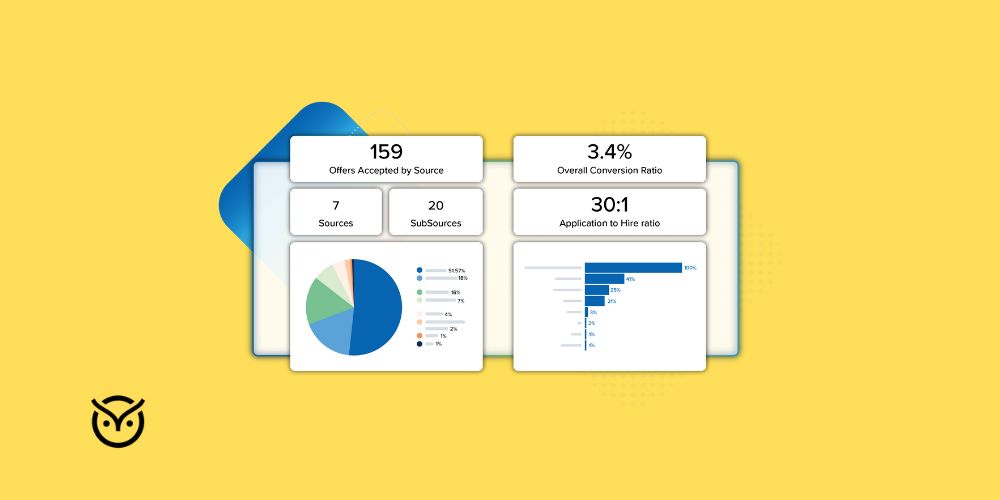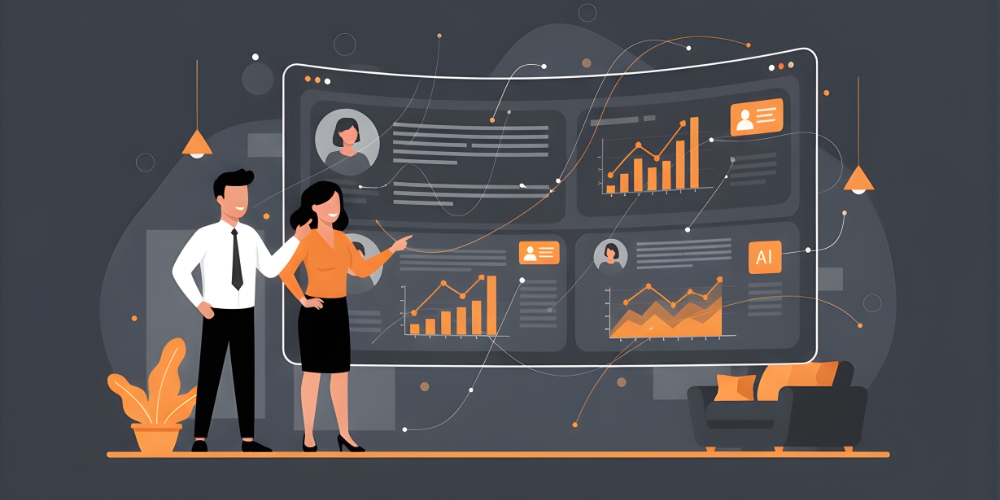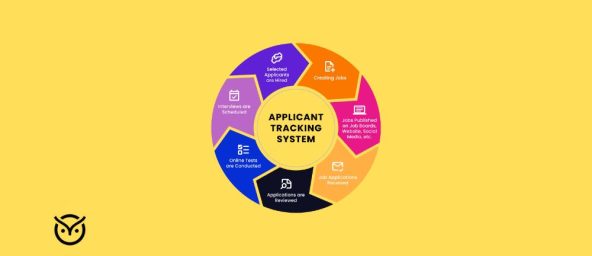
TL;DR
- Real-time hiring analytics gives recruiters instant insights into candidate quality.
- AI studies skills, behavior and cultural fit using performance data.
- Predictive analytics helps firms avoid talent shortage with workforce planning.
- Machine learning boosts accuracy with every hire, making hiring faster and smarter.
Every recruiter has faced that moment where the résumé looks perfect, the interview goes well and yet six months later, the “ideal” hire quits. The reason? Decisions are often made on instinct, not insight. Traditional hiring relies on human judgment, but data shows intuition alone misses red flags.
That’s where real-time hiring analytics comes in. It gives recruiters a live dashboard of candidate potential before the interview even starts. This blog breaks down the working of real-time hiring analytics, why it matters, and how you can use it to predict, not just guess, who will thrive in your company.
What Is Real-Time Hiring Analytics?

Real-time hiring analytics refers to the use of AI and predictive algorithms to process live data from job applications, assessments, and behavioral patterns to forecast how a candidate might perform. Instead of relying solely on CVs or interviews, recruiters now see insights like “fit score,” “attrition risk,” or “role adaptability” in real time.
AI reads and interprets data. It examines text, tone, social cues, and even micro-patterns in responses. This new model pulls data from multiple sources:
- Past job performance metrics
- Assessment test results
- Personality indicators from responses
- Engagement patterns (how quickly and thoroughly a candidate interacts)
- Public professional data and internal HR systems
Together, these datasets feed machine learning models that forecast success probabilities and this process is called workforce forecasting. The more the system learns, the sharper it gets at spotting hidden potential and possible dropouts.
Why Predicting Candidate Success Matters

Predicting success before interviews saves more than just time. It prevents hiring mistakes that cost real money. The U.S. Department of Labor estimates a bad hire can cost up to 30% of the employee’s first-year earnings. For mid-level roles, that’s tens of thousands of dollars gone due to turnover, retraining, and morale loss.
AI hiring analytics solves this by identifying high-potential candidates faster and filtering out those who might underperform or leave early. Here’s why that matters:
- Consistency: AI applies the same standards to every applicant, minimizing bias.
- Speed: It analyzes thousands of data points in seconds, shortening hiring cycles.
- Depth: It evaluates qualities beyond the résumé, like adaptability, problem-solving, and teamwork.
AI models don’t just assess skill fit. They can also flag cultural mismatches. For instance, machine learning can compare communication tone and collaboration style against company culture to assess alignment. This helps recruiters avoid talent shortage with workforce planning, since hiring the right fit reduces early attrition.
The result? Recruiters can focus interviews on candidates most likely to succeed long-term, not just those who “sound” good on paper. And with integrated workforce planning tools, organizations can visualize where future skill gaps might appear, turning hiring from guesswork into strategy.
How AI Forecasts Candidate Success

AI forecasts candidate success by combining machine learning, behavioral science, and real-time data streams. It is not just about who looks good on paper; it’s about how someone will perform, adapt, and stay.
To make these forecasts, AI systems analyze multiple data layers, both structured and unstructured. Structured data includes test scores, education and experience. Unstructured data includes writing tone, social behavior and assessment answers. Together, these form a candidate’s “digital fingerprint” of potential.
So, what types of data do AI systems analyze to forecast a candidate’s likelihood of success before the interview?
They look at personality assessments, project outcomes, peer feedback, cognitive tests and even communication styles in emails or chat responses.
Here’s how it works behind the curtain:
- Data Cleaning: AI filters incomplete or inconsistent candidate data, ensuring it only learns from reliable inputs. This addresses how AI systems handle inconsistent data without compromising accuracy.
- Model Training: The system learns patterns from past successful hires and uses them to spot similar traits in new candidates.
- Continuous Learning: With every new hire and outcome, it gets smarter. That’s the heart of machine learning in recruitment.
- Soft Skill Mapping: Natural language processing (NLP) models now assess tone, empathy and clarity, allowing AI to identify soft skills or cultural fit before the interview process.
In advanced systems, AI can even forecast which candidates are likely to leave a company early, flagging potential flight risks. Over time, this level of foresight becomes a strategic asset, aligning hiring decisions with retention goals and overall business growth.
How Recruiters Use Real-Time Analytics in Practice

In practice, real-time hiring analytics becomes a daily dashboard that recruiters depend on. It’s a workflow upgrade.
Recruiters use live dashboards to track candidate progress, interview readiness and predicted fit scores. Instead of guessing who’s most promising, they get alerts like “85% success likelihood based on role match and behavior data.”
Here’s how it plays out in real-world recruiting teams:
- Dynamic Strategy Adjustments: Recruiters can see, in real time, which sourcing channels deliver the best-performing hires, demonstrating how real-time analytics help them adjust hiring strategies on the fly.
- Collaborative Insights: Hiring managers and recruiters use shared dashboards to compare candidates, improving communication and decision speed. This also shows how real-time hiring analytics affect collaboration between recruiters and hiring managers.
- Proactive Talent Pipelining: Predictive analytics highlight future role gaps and rising skill shortages, allowing companies to prepare pipelines early. Combined with workforce planning tools, it keeps hiring aligned with long-term goals.
- Smarter Interview Scheduling: AI systems sync calendars, rank interview urgency and automate reminders to improve candidate experience. This directly ties to AI-powered interview scheduling, improving engagement and reducing drop-offs.
Organizations adopting these systems report faster placements and lower turnover. It’s not about replacing recruiters but about upgrading them. With AI handling repetitive analysis, recruiters can finally focus on relationship-building, cultural storytelling and final decision-making.
Conclusion
Real-time hiring analytics is changing recruitment from guesswork to guidance. Instead of asking “Who looks good on paper?”, companies now ask “Who will perform best in reality?”
AI’s role isn’t to replace instinct but to refine it with data-backed clarity. It gives recruiters predictive visibility, helps leaders plan for future skill needs and ensures hiring decisions support business growth.
FAQs
How can AI-powered interview scheduling and reminders improve candidate engagement?
They automate the small but crucial parts of hiring such as scheduling, reminders and follow-ups. This keeps candidates informed, reduces waiting time and builds a more professional experience without extra recruiter effort.
How do I train my recruiting team to effectively use AI recruitment software?
Start with basic data literacy. Train recruiters to interpret dashboards, understand predictive scores and use insights to guide their interviews rather than replace them. Most platforms offer in-app tutorials and live onboarding sessions.
What is the difference between AI recruiting assistants and traditional recruiting software?
Traditional tools store data. AI recruiting assistants analyze it. They track candidate behavior, forecast success and suggest next steps. All in real time.
Are there any industry-specific AI recruitment tools designed for tech, healthcare or finance hiring?
Yes. Some AI tools are tailored to niche skill sets. For instance, tech hiring platforms like Eightfold.ai and HiredScore focus on coding and digital skills while healthcare and finance systems emphasize compliance and credential verification.
What should I expect in terms of time savings when using AI recruitment tools?
Most organizations see a 30 to 50 percent reduction in time to hire within the first six months. The time saved comes from automated screening, scheduling and candidate ranking.
Are there any AI recruiting solutions specifically designed for startups and growing companies?
Yes. Lightweight platforms like Recruitee and Breezy HR offer scalable AI-powered tools that support small teams. They provide automation, analytics and predictive scoring without enterprise-level complexity.




